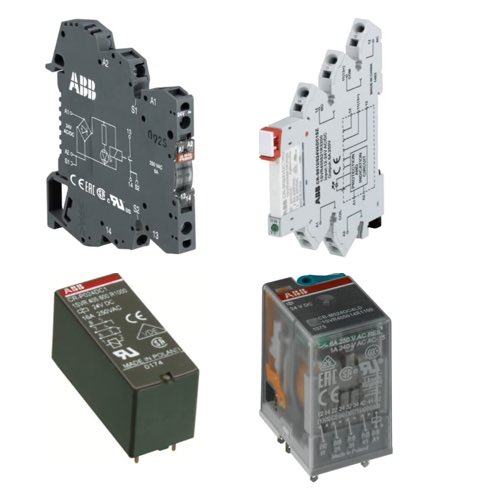ABB Electromechanical Relays

RSP Supply carries a full line of ABB electromechanical relays engineered for precision, performance, and long-term reliability. These relays are designed to meet the stringent demands of industrial, commercial, and utility applications where stable operation and dependable circuit control are critical.
ABB electromechanical relays function using electromagnetic forces that mechanically actuate electrical contacts, ensuring clear separation between control and switched circuits. This traditional mechanical design remains a trusted solution for engineers seeking durable, consistent, and safe relay performance.
ABB’s lineup includes single pole and double throw (SPDT) interface relays suitable for a wide range of uses, including automation, power distribution, and motor control. Each relay is designed for high breaking capacity, consistent performance, and precise response in both light-duty and high-demand applications.
FAQs
Q: What are ABB electromechanical relays used for?
ABB electromechanical relays are used for signal switching, control logic, and circuit protection in industrial automation, utilities, and electrical distribution systems.
Q: What types of electromechanical relays does ABB offer?
ABB offers single pole, double throw (SPDT) interface relays and multi-pole configurations for use in automation, control panels, and power applications.
Q: Why choose electromechanical relays over solid-state relays?
Electromechanical relays provide physical contact separation between circuits, ensuring higher isolation, mechanical durability, and reliable switching under load.
Q: Are ABB electromechanical relays suitable for high-load applications?
Yes. Many ABB relays feature high breaking capacities and are rated for heavy-duty industrial use where consistent, safe switching is required.
Q: How long do ABB electromechanical relays typically last?
ABB relays are designed for long operational life, often reaching millions of cycles depending on the load and application environment.
Why Buy ABB Electromechanical Relays from RSP Supply
RSP Supply is a trusted ABB distributor offering a comprehensive selection of electromechanical relays, accessories, and automation components. With competitive pricing and expert technical support, RSP Supply helps you find dependable ABB solutions that keep your systems safe, efficient, and reliable.

